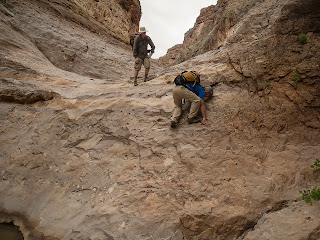Summer in Laramie can be so perfect that you cling to every day, knowing that it doesn't last long. Tonight, I sat on
our back patio, a light breeze adding just enough cool to the warm air to make
it exceptionally nice. I looked around,
realizing that from my vantage point, without moving from my chair, I could photograph a collection of objects that epitomize summer
and home life.
Adirondack chair:
My Dad made this for us out of cypress wood from the southeastern
U.S. He lives in Virginia, and I don’t
even remember how the chair made its way to Wyoming. Now, years later, it’s finally falling apart,
but it’s hard to part with. I still use
it to set things on—mostly plates of food to be grilled. And I can’t quite bring myself to throw it
away, even as it becomes more unsittable.
Plastic patio chair:
Like the one I’m sitting on. We
bought four of these some years ago; I can’t remember how many. This year I hauled their cushions to the
dump. They were too decrepit to use and
had been stored in the garage and covered with dust, but the chairs still
work. They aren’t as elegant as a
handmade cypress Adirondack chair, but I sit in them anyway. We have four.
For guests. Sometimes, when the
clothesline is full, I hang socks over the backs of them to dry.
Charcoal: A bag of
charcoal with hickory somehow embedded, stored in the garage. It seems like a good idea to use charcoal
that has hickory in it, even though I don’t really know what hickory tastes
like.
Grill brush: This was a gift from my near-vegetarian family. I heard on NPR that a clean grate is the key
to good grilling. Before I cook a
rib eye, I scrape off the remains of the last one. And Ellen and Bei feel better that before I
grill vegetables I make an effort to remove the beef.
Tomatoes: Ellen grows
these every year, despite the short Laramie growing season. They taste way better than the ones at the
store, but when the green ones start to appear on the plants, it means that
summer is almost over. We move the
plants into the laundry room before the tomatoes are ripe to save them from the
first freeze, and we are usually well into winter snow before we finish eating the
last fresh tomato.
Hose paraphernalia:
Ellen is the gardener in the family, and we have lots of this kind of
shit in the garage and house, attached to the hose bib, and scattered around
the lawn. It’s complicated—valves and
timers and couplings. I’m never sure
which of it works and which has failed, so I don’t throw it away. Instead, it gets put into piles that then get
moved out of the way, and we buy some more at the Ace Hardware up the street.
Rocks: These are rocks
that we’ve collected when camping. We
usually find good ones…too good to just leave laying on the ground. So we bring them home and store them on the
fence. The winter wind in Laramie is
strong enough to blow them off the fence, but we pick them up in the spring and
put them back where they belong. Then we
go look for more.
Hanging flower baskets:
The idea is to have lovely hanging flowers around the house. We have some, but some we don’t get around
to planting, and then winter comes again.
Woodpile: When we
bought our house, I had a lot more energy for remodeling, so I bought a cord of
wood and a stove to keep the garage warm when I was milling trim and upgrading the
kitchen. Now I don’t want to work on the
house ever again, so the woodpile is rotting away, sheltering rabbits and mice. Sometimes I take some for campfires if I
remember to pack it into a plastic milk crate before I hit the road.
Clothesline: In the
summer in Laramie, clothes dry faster on the line than they do in the
dryer. This is true in the dry air of
day and even by moonlight. It seems good
to air dry clothes instead of burning natural gas in the dryer, but we don’t
have quite enough clothes pins.
Cat platform: Our
current cats (Henry and Psymon) are indoor cats (prisoners). Our last generation of cats (Ernie and Zopie)
could come and go as they pleased, which may have contributed to their demise. I built this platform to provide them with a place to assess
the backyard after they exited their cat door.
Tile mosaic (art):
Bei made this tile mosaic during an art camp in Boulder, Colorado. We display it in the backyard, behind one of
our patio chairs.
Last light: The last
light of day on our neighbor’s tree.
It’s surprising how often the light at the end of the day in Laramie in
the summer is perfectly golden and warm, and it’s surprising how little time
the trees have leaves on them to take advantage of it. When I see the golden light, I feel vaguely
guilty that I’m sitting in the backyard instead of driving around to make more
dramatic and meaningful photographs.
Cold margarita: A
nice cold margarita (the ice melted) on our patio table.
Just enough of a cocktail to encourage me to blog about stuff on our
back patio.

































































